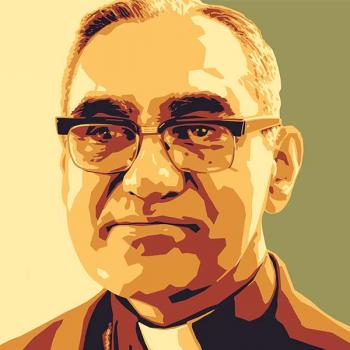The Council Commences
Thomas Canon Pope provides the most generous estimate of the number of prelates invited to participate at the council with 1044.[1] The total number of prelates who attended the Council was 793, by far the largest and most ecumenical council in previous Christian history.[2] It was determined beforehand by the Directing Commission that all bishops with Episcopal sees and all Cardinals of the Church were entitled to sit at the Council. In addition to these, titular bishops who were either vicars apostolic or overseeing foreign missions were admitted. Abbots who were ordinaries of a diocese with certain episcopal jurisdiction were admitted, as were those who were presidents of monastic communities. Finally, the Superior Generals of religious orders were permitted to attend the Council.[3] The admission of titular bishops and religious would later become a point of contention from some Minority bishops who were displeased with the size of this particular voting bloc.
The first gathering of the bishops was at a Pre-synodal Congregation held in the Sistine Chapel on December 2, 1869. It was a strict meeting addressing the formalities of the Council. The Presidents of the Council were announced who would preside over all General Congregations in Pius’ name and authority. The “parliamentary handbook of the council”, Multiplices inter, was promulgated, setting the rule of procedure.[4] Of all the consulters, Bishop Karl Hefele of Rottenburg, was charged with drafting a votum on the procedure in conducting business at the Council. Previously in March, his text was adopted by the Directing Commission, and Hefele, who figured among the Minority bishops, became the engineer of the Council’s conduction.[5] The pope solely retained the prerogative of proposing questions beyond the prepared schemata, but the bishops were given the right to submit suggestions for consideration to a Congregatio de postulates, which would review and recommend to the Pope any subject that ought be brought to the Council floor. The final decision as to whether the subject would be opened to the Council Fathers rested with Pius himself.
The Council formally opened on December 8, 1869, but the first General Congregation was on December 10 presided over by the four Council Presidents. There Cardinal de Luca read the names selected by Pius for the Congregatio de postulatis to the 679 present. Of the twenty-six chosen for the congregation, twelve were cardinals, including Rauscher of Vienna (Minority) and Bonnechose of Rouen (Majority), twelve were archbishops and bishops, including Guibert of Tours (Majority), Martin Spalding of Baltimore (Majority), Manning, and Dechamps, and also Greek-Melkite Patriarch Jussef of Antioch (Majority) and the Latin Patriarch of Jerusalem (Minority). Also established were two boards, one of Judges of Excuses and the other of Judges of Complaints and Controversies. The first order of business for the bishops was the election of bishops for four deputations to review and redraft proposed schemata. The most important of these was the Deputatio de Fide which would no doubt deal with “the question” should it arise during future proceedings. Even though each bishop was to vote by secret ballot at the next General Congregation, the election nonetheless served as the occasion for the first concrete opportunity for the ideologues to respectively unite.
Manning organized an international group of bishops in support of the definition of papal infallibility, which included Senestréy, Dechamps, Martin of Paderborn and Bouillerie of Carcassonne, and held meetings at the Villa Casserta in order to monitor and counteract the French and German bishops who were known antagonists to the infallibility cause. It was imperative that no anti-infallibilist be elected to the Deputatio de Fide and that the members be from different nations. Although Dechamps was considered the leader of the infallibility campaign, Manning took the initiative of crafting a list of 24 names of Fathers and submitted it to Cardinal de Luca for inspection. The President approved of the list, and Senestréy had it lithographed and distributed to as many bishops as possible.[6]
The Minority bishops, crafted their own list for the election. However, the Minority bishops fundamentally lacked the organization of the Villa Casserta; ideological differences had prevented them organizing before the Council, so they remained a stride behind from the outset.[7] They tended to built upon national blocs of French led by Cardinal Mathieu of Besangon and Archbishop Darboy of Paris, Austro-Germans led by Schwarzenberg and Rauscher, Hungarians led by Primate Simor, and North Americans led by Archbishops Peter Kenrick of St. Louis and Connolly of Halifax. Dupanloup served as the “whip” of the Minority, a counterpart to Manning. Working behind the scenes with the Minority was the man responsible for what unity the opposition could muster,[8] the great English historian John Acton, who kept his former master Döllinger informed of the progress of the opposition. However, despite the competence and dynamism of this camp, their influence could not extend as far as that of the Villa Casserta.
The election of the Deputatio de Fide occurred at the General Congregation of December 14. Manning proved himself quite the effective solicitor, for all twenty-four bishops he had listed were elected, though he did not realize that he had inadvertedly nominated an inopportunist in Simor. Unfortunately for Manning, Pius desired to have representatives from the Minority on the Deputation, and called for Dupanloup by name, and thought he had set the precedent by appointing at least three Minority bishops to the Congregatio de postulatis. Naturally, the Pope was quite disturbed by such cunningness, and even the leading candidate for de Fide, Bishop Pie of Pontiers, disapproved of the entire proceeding. Manning, who earned the nickname “diabolus consilii”,[9] responded by asserting that “heretics come to a Council to be heard and condemned, not to take part in formulating doctrine.”[10] Thus, it was becoming evident that it was not the Pope or Curia of which the Minority had to beware, but Manning and his sway over the bishops still riding the fence.
It took the greater part of December to elect bishops to the other three deputations, but papal infallibility was never discussed by the Council itself. The definition was not on the official agenda of the Council as determined by the subsidiary committees. These committees had decided that while the doctrine of papal infallibility was indeed definable, it was not expedient for the Holy See to propose it before the Council; Pius was committed to leaving the matter to the bishops. Hence the Fathers busied themselves with ulterior matters of faith and discipline. The discussion and debates did not begin until December 28 and 30 at the fouth and fifth General Congregations. On the floor was the schema of a dogmatic constitution on faith and the errors of rationalism, which would take until April 24, 1870 to be solemnly defined.[11] However, both major camps continued their extra-conciliar activities through the NewYear with immense fervor.
On December 23, Dechamps, Manning, Senestréy and six other bishops met at Villa Casserta to prepare a petition to bring the issue of papal infallibility to the Council agenda for consideration. The petition was issued on December 30, and circulated among the Council Fathers throughout the entire month of January. By the turn of February, the petition had accumulated 380 signatures. Other petitions for the same cause had gathered roughly 100 more. The Minority, organized by Haywald and Dupanloup, also circulated a petition, which could muster only 140 signatures. At the end of January, all the petitions were submitted to Pius. But even the pope refused to violate the Council procedures, and referred them all to the Congregatio de postulatis.
It had became apparent that papal infallibility was favored by the bishops of predominately Catholic countries that enjoyed no significant rivalry from another organized religion. The oppositions and hesitations to the doctrine tended to stem from bishops whose countries had large or predominate Protestant or Orthodox standing. Thus, the Belgian, Polish, Swiss, Spanish, Latin American, Italian and Irish were generally of infallibilist persuasion. On the other hand, the Germans, Austrians, and Hungarians were generally of the opposition. The anomalies were the French and the Eastern Rite bishops, the former divided into three parties, and the latter equally divided on the issue.[12] The Americans, who were originally counted on by the opposition, were deeply divided by the New Year. Under the leadership of Spalding, who originally was an inopportunist, seven American bishops sent in their own petition for the cause of the definition.
Meanwhile in Germany, Döllinger began a periodical campaign by publishing a series of Letters from Rome under the pseudonym “Quirinus.” They were based upon nothing more than the radically filtered accounts of the Council’s proceedings given by Acton and certain national embassies in contact with leading Minority bishops, and were extremely hostile toward the Council. Immediately, those in Rome attributed the diatribe to Acton and Döllinger, and many of Acton’s more moderate informants began to steer clear from him out of distrust.[13] However, Acton’s resolve was far from shaken, and he began to place his hope entirely in Strossmayer and Darboy. Around Rome, it was whispered, “The opposition is a sword, and its point is Strossmayer’s lips, and its hilt is the hand of Acton.”[14] Unfortunately, Acton had alienated himself from too many bishops, and the ensuing months saw a decrease in his effectiveness, and subsequently, a weakening of the opposition.
—–
[1] The Council of the Vatican and the Events of the Time (Boston: Patrick Donahoe, 1872), 24.
[2] Luis M. Bermejo, Infallibility on Trial: Church, Conciliarity and Communion (Westminster, MD: Christian Classics, Inc., 1992), 132. Cf. Aubert, 100.
[3] Butler, 92.
[4] James Hennesey, The First Council of the Vatican: The American Experience (New York: Herder and Herder, 1963) 32-33
[5] In brief, Hefele determined that drafts of a proposed definition or reform from the subsidiary commissions would be sent to each bishop at the Council before a fixed day for the opening discussion on that particular matter. The discussions would take place at General Congregations at which any bishop who wished to address the Council Fathers could take the floor. However, his name must be submitted to the Council Presidents beforehand. There would be no time limit to speeches, and any proposed changes to the draft in question would be studied by one of four committees of bishops (Faith, Discipline, Religious Orders, Easter Rite churches) democratically elected by the Fathers. A revised draft would then be distributed to the Fathers, and amendments could be proposed. Finally, after the respective committee studied all suggested amendments, a final draft would be definitely voted on at a Public Session. Cf. Butler, 157-159.
[6] Hennesey, 44.
[7] Margaret O’Gara, Triumph in Defeat: Infallibility, Vatican I, and the French Minority Bishops (Washington, D.C.: The Catholic University of America Press, 1988) 22. The two most prominent French of the Minority, Darboy and Dupanloup, were sharply divided over politics and were hardly cordial even during the Council.
[8] Owen Chadwick, Acton and History (Cambridge: Cambrige University Press, 1998), 84.
[9] David Newsome, The Convert Cardinals: John Henry Newman and Henry Edward Manning (London: John Murray, 1993) 274. It is purported that Manning relished in this title.
[10] Quoted in Butler, 174.
[11] This decree, Dei Filius, was the first of only two Dogmatic Constitutions put forth by the First Vatican Council.
[12] An interesting note regarding the French opposition bishops is that they all attended seminaries that showed distinctive Gallican tendencies. O’Gara, 18.
[13] Chadwick, 84.
[14] Quoted in Ibid., 83.












